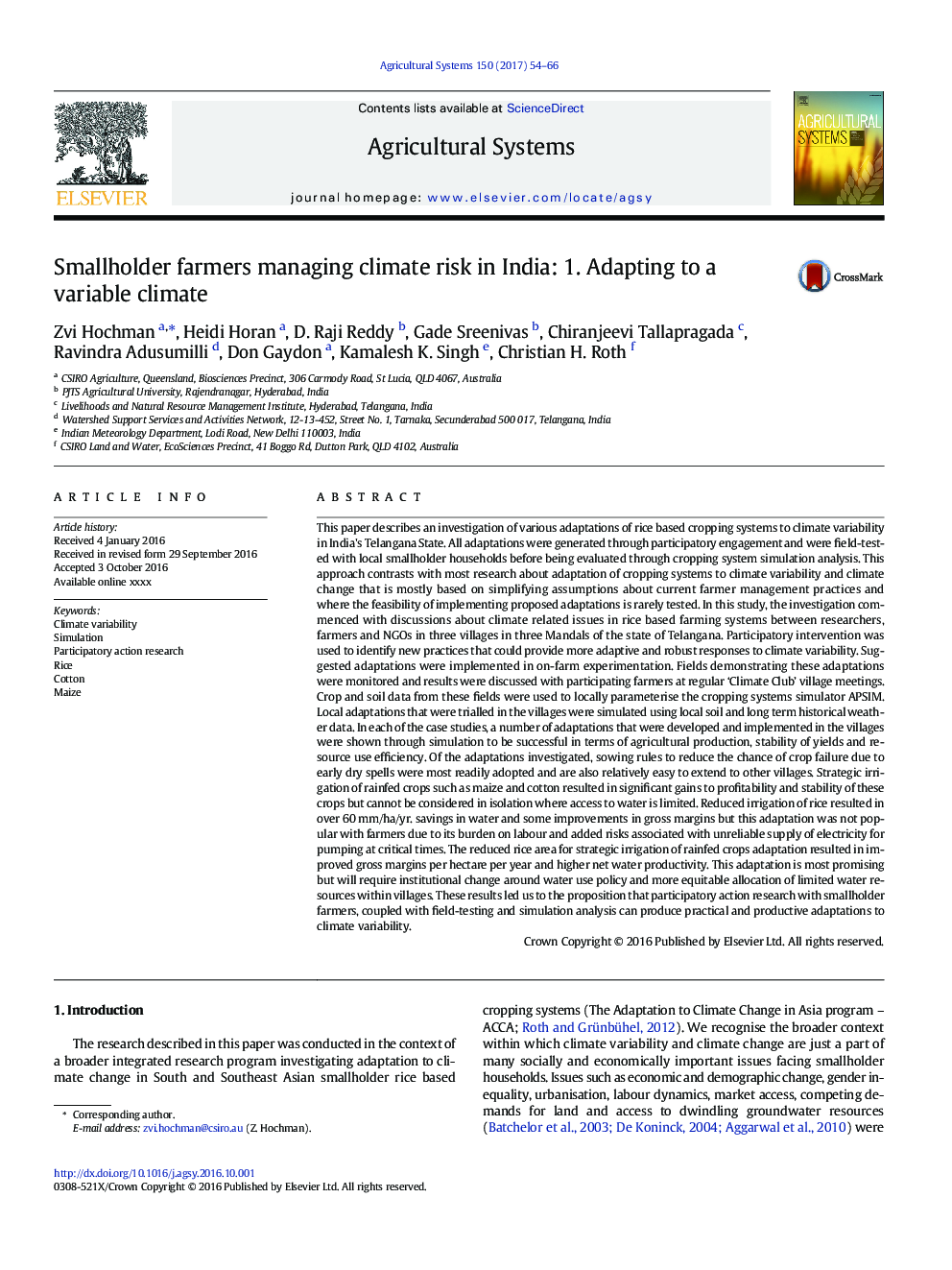| کد مقاله | کد نشریه | سال انتشار | مقاله انگلیسی | نسخه تمام متن |
|---|---|---|---|---|
| 4491106 | 1623220 | 2017 | 13 صفحه PDF | دانلود رایگان |
• Adaptations to climate variability in rice based systems were implemented and evaluated by village farmers in India.
• On farm experimental data was used to ensure validity of Cropping Systems Simulation results.
• Multiple outputs from simulations were used to evaluate the desirability of adaptations.
• New insights about adaptations were gained from integrating participatory on farm research and bio-physical simulation.
This paper describes an investigation of various adaptations of rice based cropping systems to climate variability in India's Telangana State. All adaptations were generated through participatory engagement and were field-tested with local smallholder households before being evaluated through cropping system simulation analysis. This approach contrasts with most research about adaptation of cropping systems to climate variability and climate change that is mostly based on simplifying assumptions about current farmer management practices and where the feasibility of implementing proposed adaptations is rarely tested. In this study, the investigation commenced with discussions about climate related issues in rice based farming systems between researchers, farmers and NGOs in three villages in three Mandals of the state of Telangana. Participatory intervention was used to identify new practices that could provide more adaptive and robust responses to climate variability. Suggested adaptations were implemented in on-farm experimentation. Fields demonstrating these adaptations were monitored and results were discussed with participating farmers at regular ‘Climate Club’ village meetings. Crop and soil data from these fields were used to locally parameterise the cropping systems simulator APSIM. Local adaptations that were trialled in the villages were simulated using local soil and long term historical weather data. In each of the case studies, a number of adaptations that were developed and implemented in the villages were shown through simulation to be successful in terms of agricultural production, stability of yields and resource use efficiency. Of the adaptations investigated, sowing rules to reduce the chance of crop failure due to early dry spells were most readily adopted and are also relatively easy to extend to other villages. Strategic irrigation of rainfed crops such as maize and cotton resulted in significant gains to profitability and stability of these crops but cannot be considered in isolation where access to water is limited. Reduced irrigation of rice resulted in over 60 mm/ha/yr. savings in water and some improvements in gross margins but this adaptation was not popular with farmers due to its burden on labour and added risks associated with unreliable supply of electricity for pumping at critical times. The reduced rice area for strategic irrigation of rainfed crops adaptation resulted in improved gross margins per hectare per year and higher net water productivity. This adaptation is most promising but will require institutional change around water use policy and more equitable allocation of limited water resources within villages. These results led us to the proposition that participatory action research with smallholder farmers, coupled with field-testing and simulation analysis can produce practical and productive adaptations to climate variability.
Journal: Agricultural Systems - Volume 150, January 2017, Pages 54–66
